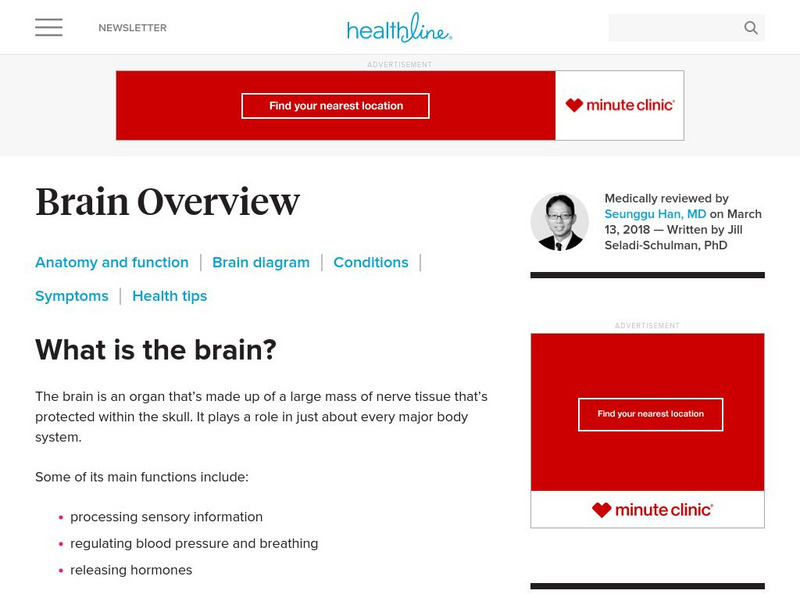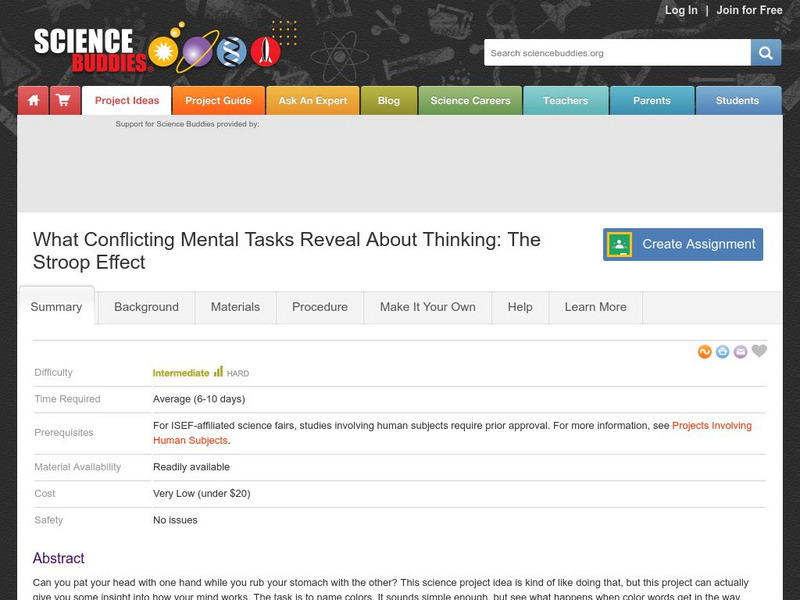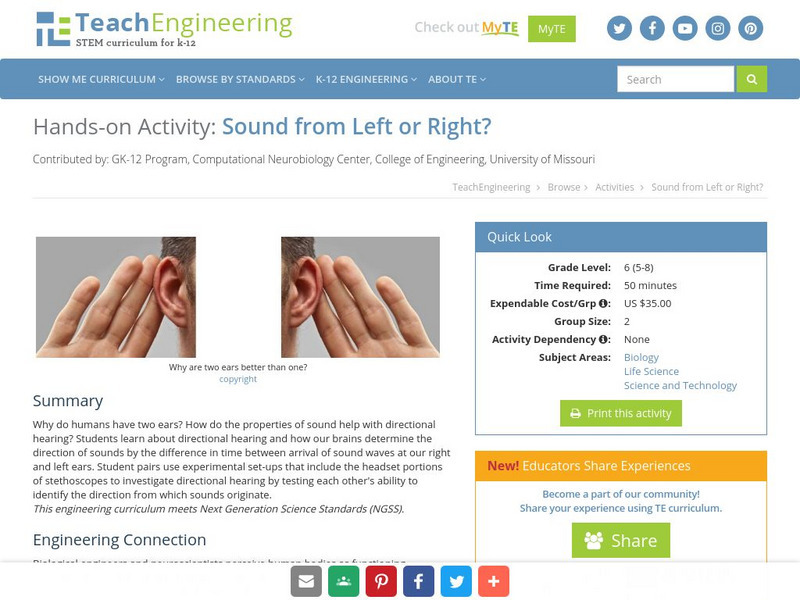OpenStax
Open Stax: The Skull
This interactive site provides all kinds of information regarding the human skull.
Other
Get Body Smart: General Organization of the Nervous System
Brought to you by Get Body Smart, students can learn about the human nervous system through this easy-to-access tutorial. Sections include Major Organs and Divisions, Sensory and Motor Divisions, Somatic Divison, Sample Somatic Divison...
PBS
Pbs Kids Design Squad: Supporting Steady Hands
Have you heard of a disease called Parkinson's? When people have this disease they often show signs or symptoms, like shaking uncontrollably. This shaking can make doing simple things harder. Emma Lawton is a person with Parkinson's, and...
CK-12 Foundation
Ck 12: Life Science: 11.43 Peripheral Nervous System
Understand the structure and function of the peripheral nervous system in the human body.
CK-12 Foundation
Ck 12: Life Science: 11.45 Nervous System Injuries
Learn about some injuries to the human nervous system.
TED Talks
Ted: Ted Ed: The Difference Between Classical and Operant Conditioning
Peggy Andover explains how the brain can associate unrelated stimuli and responses, proved by Ivan Pavlov's famous 1890 experiments, and how reinforcement and punishment can result in changed behavior. [4:13]
Khan Academy
Khan Academy: Cocaine Addiction in Mice
Read this passage and answer the five-question quiz to tests your knowledge on drug addiction treatments.
Other
Healthline: Three Dimensional Body Map: Nervous System
Rotatable view of the nervous system lets you examine the anatomy of the brain in 360 degrees.
Other
Marine Biological Laboratory: Why Study Marine Organisms for Biomedical Research
Descriptions of various research projects using marine organisms that have direct impact on medical research. The resource has a perspective on how medicine makes progress.
Curated OER
Kids Health: My Body
For elementary school children, this page presents information about lungs, muscles, digestive system, teeth, skin, tongue, hair, heart, and more.
CommonLit
Common Lit: Text Sets: Science of the Body
Introduce students to how the body looks and works with these texts on biology and genetics. This collection includes 20 Grade-Leveled texts (5-10) on the topic of Science of the Body. [Free account registration required for specific...
University of Washington
Neuroscience for Kids Other Translations
Translations of Neuroscience for Kids, an excellent site on the brain and brain science by neuroscientists at the University of Washington. Includes Chinese (Mandarin and Cantonese), Portuguese, Italian, Slovene, and Korean. Translations...
Curated OER
Drug Mechanisms and Brain Function: The Antipsychotic Experience
Article on the effect of certain drugs on human personality. Article's foundation is in anti-psychotic research.
Curated OER
Drug Mechanisms and Brain Function: The Antipsychotic Experience
Article on the effect of certain drugs on human personality. Article's foundation is in anti-psychotic research.
Science Buddies
Science Buddies: The Nose Knows Smell but How About Taste?
As if sniffles and clogged sinuses are bad enough, everything seems to taste bland and flavorless when we are sick. Gather up a few volunteers, hit the kitchen, and try this experiment to find out if there is really truth to the idea...
Science Buddies
Science Buddies: Think Fast: Do Video Game Players Have Faster Reaction Time
Are you an avid video game player? Do you think this helps you have fast reaction times? This Science Buddies science project lays out an experiment to help you test your hypothesis. The Science Buddies project ideas are set up...
TED Talks
Ted: Ted Ed: What's an Algorithm?
An algorithm is a method of solving problems both big and small. Though computers run algorithms constantly, humans can also solve problems with algorithms. David J. Malan explains how algorithms can be used in seemingly simple...
Cynthia J. O'Hora
Mrs. O's House: Concussion and Head Injury Action Plan
Concussions and head injuries are the buzz in sports today. Address concussion and head injuries in the classroom and provide students resources to research and report on findings.
Science Buddies
Science Buddies: What Conflicting Mental Tasks Reveal About Thinking
Can you pat your head with one hand while you rub your stomach with the other? This experiment is kind of like that, but it can actually give you some insight into how your mind works. The task is to name colors. It sounds simple enough,...
TeachEngineering
Teach Engineering: Our Bodies Have Computers and Sensors
Students learn about the human body's system components, specifically its sensory systems, nervous system and brain, while comparing them to robot system components, such as sensors and computers. The unit's life sciences-to-engineering...
Science Buddies
Science Buddies: Warped Words and the Stroop Effect
The Stroop effect describes an experiment about the time it takes to name the color of printed words. When you try to name the color in which color words are printed, it takes longer when the color word differs from the ink color than...
TED Talks
Ted: Ted Ed: How Do We Smell?
An adult human can distinguish up to 10,000 odors. You use your nose to figure out what to eat, what to buy and even when it's time to take a shower. But how do the molecules in the air get translated into smells in your brain? This...
TeachEngineering
Teach Engineering: Sound From Left or Right?
Why do humans have two ears? How do the properties of sound help with directional hearing? Students learn about directional hearing and how our brains determine the direction of sounds by the difference in time between arrival of sound...
Curated OER
Kids Health: How the Body Works
A colorful, interactive site for kids and teens. A holistic approach to learning about your body, including topics such as feelings, drugs, injuries, and other health issues. Available in Spanish.



















